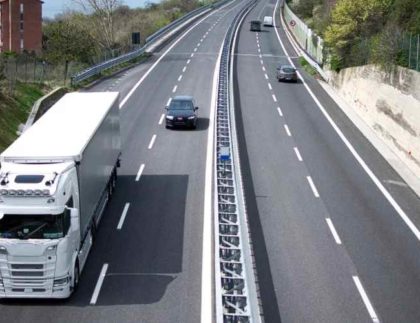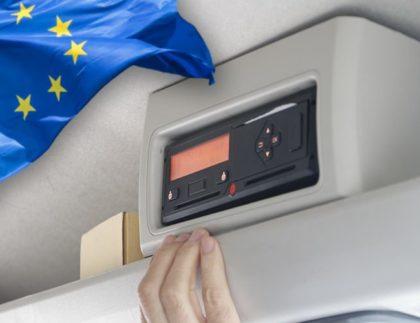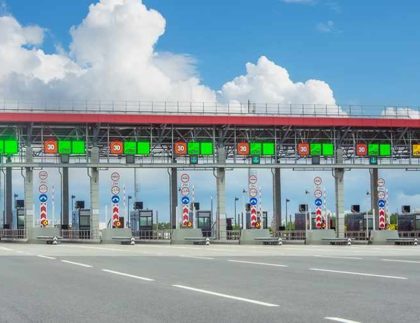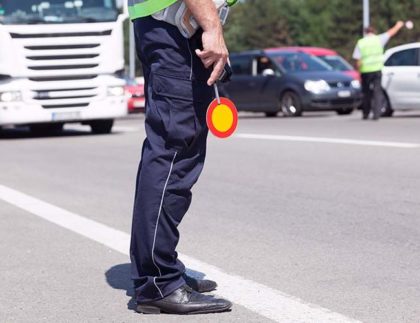

On 2 May this year, two new regulations were published in the Official Journal of the European Union. One of them specifies the formula for calculating the company rating, while the other amends Regulation (EU) 2016/403 with a new classification of infringements. Coming into force on 23 May this year, the Regulations are yet another element of the mobility package implementation.
The new regulations are available on the following websites:
- Commission Implementing Regulation (EU) 2022/695 of 2 May 2022 laying down rules for the application of Directive 2006/22/EC of the European Parliament and of the Council as regards the common formula for calculating the risk rating of transport undertakings – https://eur-lex.europa.eu/legal-content/EN/TXT/PDF/?uri=CELEX:32022R0695&from=en
- Commission Implementing Regulation (EU) 2022/694 of 2 May 2022 amending Regulation (EU) 2016/403 as regards new serious infringements of the Union rules which may lead to the loss of good repute by the road transport operator – https://eur-lex.europa.eu/legal-content/EN/TXT/PDF/?uri=CELEX:32022R0694&from=EN
What are the new regulations introducing?
The transport operator rating that will be displayed to inspectors during ERRU/KREPTD inspections (including road checks) in one of 4 colours:
- operators on which no checks were performed (grey band)
- 0-100 points: low-risk operators (green band)
- 101-200 points: medium-risk operators (amber band)
- 201 points or more: high risk operators (red band)
The score is determined according to the type of identified infringements (MSI – 90, VSI – 30, SI – 10, MI – 1) from the last two years with an average calculated per inspection and per vehicle, according to the following formula:

Where:
R – the undertaking’s overall risk rating
n – number of infringements of a given type per individual check (all types of controls).
i — individual check
v – weighted score according to type/seriousness of infringement (MI/SI/VSI/MSI)
MSI – most serious infringement
VSI – very serious infringement
SI – serious infringement
MI – minor infringement
N – number of vehicles controlled during an individual check
r – total number of checks on the undertaking
g – weighting for the use of the smart tachograph pursuant to Chapter II of Regulation (EU) No 165/2014
If, in the future, the company has fleet equipped only with second-generation smart tachographs, then the result will be reduced by 10%.
The preliminary analysis shows that most carriers will be grey or green, since even amber means that there are a lot of infringements. To be more precise, amber score indicates that, on average, there has been more than one most serious infringement per check per vehicle. The most serious infringements include, for example, manipulations, for which in Poland you can also lose your driving license for 3 months.
The new classification of infringements introducing categorisation for previously unspecified infringements – mainly new infringements resulting from the recent changes to the mobility package. The most interesting include:
- Regular weekly rest period or any weekly rest period of more than 45 hours taken in a vehicle – VSI;
- The employer not covering costs for accommodation outside the vehicle – SI;
- Transport undertaking not organising the work of drivers in such a way that the drivers are able to return to the employer’s operational centre, or to return to the drivers’ place of residence – VSI;
- Link between wage and distance travelled, speed of delivery or amount of goods carried – VSI;
- Incorrect use or non-use of the ferry/train sign – SI;
- Records not showing the symbols of the countries whose borders were crossed – SI – there is a conflict with the Polish tariff here, because in Polish regulations the missing country symbol is defined as a VSI;
- Failure to comply with the rules of cabotage (e.g. not producing documents , no cooling-off period) – VSI
- Failure to submit posting declaration – VSI;
- Failure to update posting declaration – SI.
The addition of these and other infringements is important as there are countries where the penalty amount depends on the degree of infringement. The more items in this regulation, the easier it is for the transport operator to lose repute, and thus the ability to practice. At Inelo, we are working on adapting to the new regulations. We will keep you updated.










